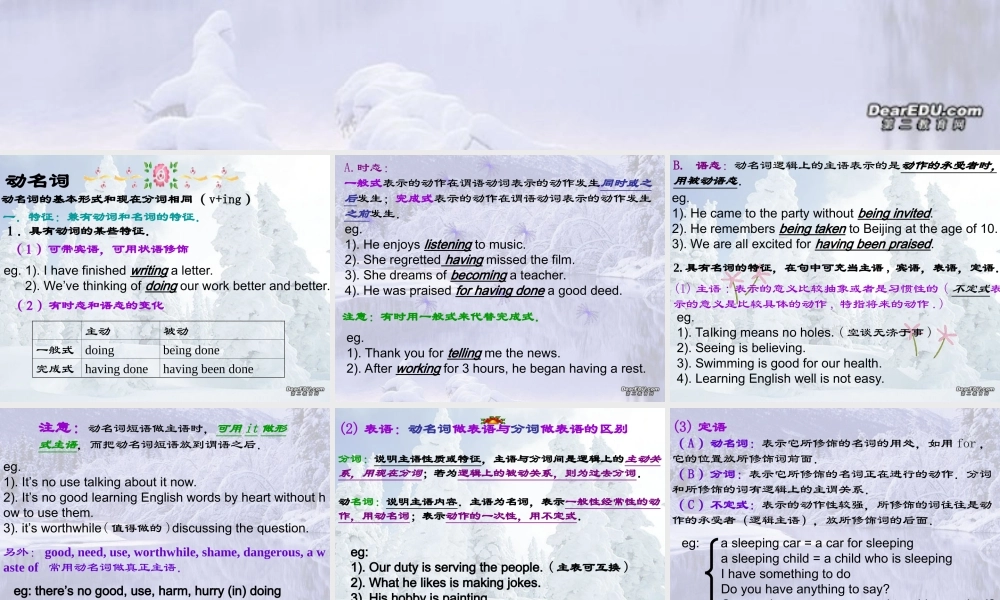The Gerund The Gerund 动名词动名词的基本形式和现在分词相同( v+ing )动名词一.特征:兼有动词和名词的特征.1.具有动词的某些特征.(1)可带宾语,可用状语修饰eg. 1). I have finished writing a letter. 2). We’ve thinking of doing our work better and better.(2)有时态和语态的变化主动被动一般式doingbeing done完成式having donehaving been doneA.时态:一般式表示的动作在谓语动词表示的动作发生同时或之后发生;完成式表示的动作在谓语动词表示的动作发生之前发生.eg.1). He enjoys listening to music.2). She regretted having missed the film.3). She dreams of becoming a teacher.4). He was praised for having done a good deed.eg. 1). Thank you for telling me the news.2). After working for 3 hours, he began having a rest.注意:有时用一般式来代替完成式.B. 语态:动名词逻辑上的主语表示的是动作的承受者时,用被动语态.eg. 1). He came to the party without being invited.2). He remembers being taken to Beijing at the age of 10.3). We are all excited for having been praised.2. 具有名词的特征,在句中可充当主语 , 宾语,表语,定语.(1) 主语 : 表示的意义比较抽象或者是习惯性的 ( 不定式表示的意义是比较具体的动作 , 特指将来的动作 .)eg.1). Talking means no holes.( 空谈无济于事 )2). Seeing is believing.3). Swimming is good for our health.4). Learning English well is not easy.注意:动名词短语做主语时,可用 it 做形式主语,而把动名词短语放到谓语之后.eg. 1). It’s no use talking about it now.2). It’s no good learning English words by heart without how to use them.3). it’s worthwhile( 值得做的 )discussing the question.另外: good, need, use, worthwhile, shame, dangerous, a waste of 常用动名词做真正主语.eg: there’s no good, use, harm, hurry (in) doing (There’s no joking about the matter.)(2) 表语:动名词做表语与分词做表语的区别分词:说明主语性质或特征,主语与分词间是逻辑上的主动关系,用现在分词;若为逻辑上的被动关...


